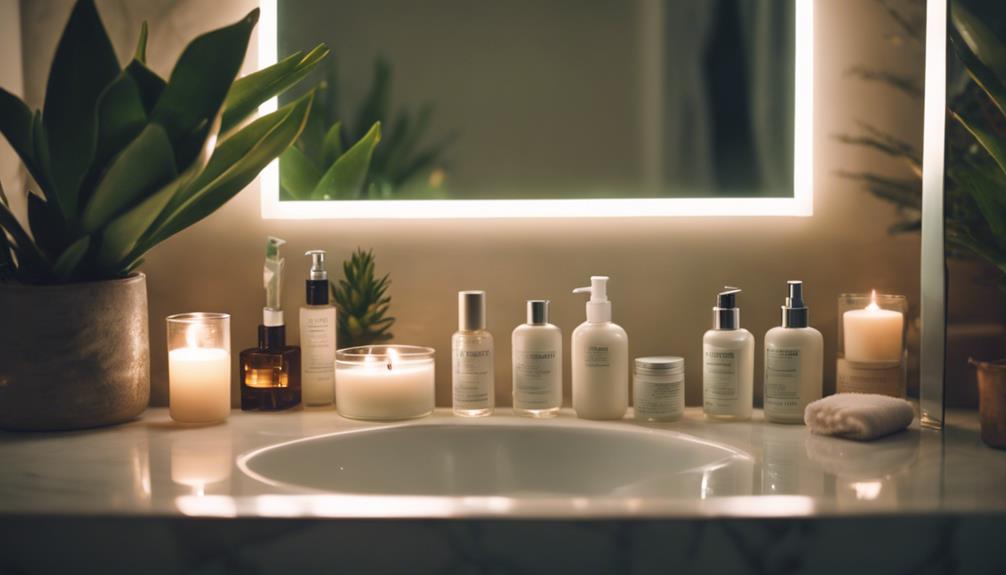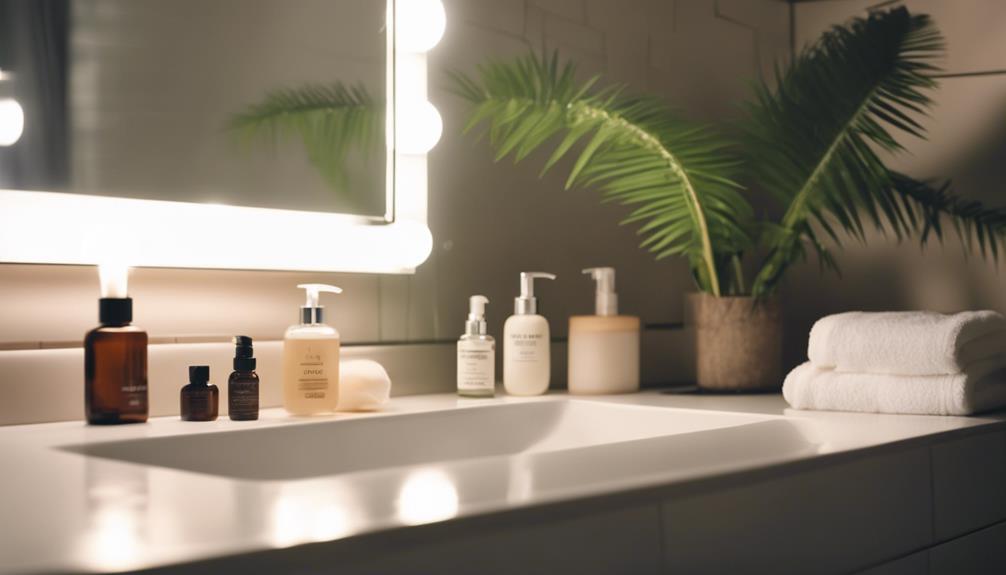To get the most out of tretinoin with minimal irritation, it is recommended to begin with a low concentration and apply it in the evening. Start by cleansing your skin, allowing it to dry for 20-30 minutes, then use a pea-sized amount of tretinoin. Gradually increase usage to nightly as your skin adjusts. Include a gentle cleanser and a hydrating moisturizer in your routine, using the ‘sandwich technique’ – moisturizer before and after tretinoin. Remember to apply daily broad-spectrum sunscreen, as tretinoin can increase sun sensitivity. By following these steps, you can improve your results and comfort. Feel free to explore more tips for further optimization if you’re interested.
Key Takeaways
- Start with a low concentration of tretinoin and apply 2-3 times a week to build skin tolerance gradually.
- Cleanse your face and wait 20-30 minutes before applying tretinoin to minimize irritation.
- Use the 'sandwich technique' by applying a moisturizer before and after tretinoin for added hydration.
- Incorporate daily broad-spectrum sunscreen (SPF 50) to protect against increased sun sensitivity.
Understanding Tretinoin
Tretinoin, a potent form of vitamin A, transforms your skin by promoting collagen production and speeding up cell turnover. As a prescription medication, it's considerably more effective than over-the-counter retinol, making it a powerful ally in your skincare regimen. Tretinoin works by binding to vitamin A receptors in your skin cells, helping to reduce acne and improve the appearance of fine lines, wrinkles, and hyperpigmentation.
However, you should also be aware of potential side effects. Common issues include skin irritation, redness, and dryness, especially during the initial adjustment phase. You might experience a 'tretinoin purge,' where temporary breakouts occur as your skin acclimates to the treatment. To minimize these effects, start with a low concentration and apply it consistently at night.
Another important aspect is sun sensitivity. Tretinoin increases your skin's vulnerability to UV rays, so daily sun protection is essential.
Benefits of Tretinoin
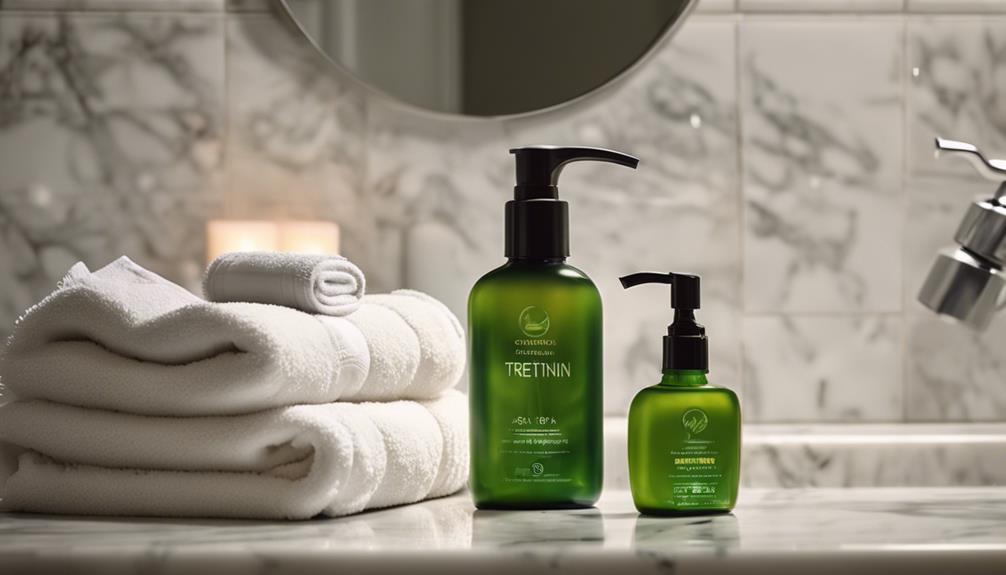
Tretinoin offers powerful benefits for your skin, especially when it comes to treating acne and reducing signs of aging.
By accelerating cell turnover, it clears existing blemishes while preventing future breakouts.
Plus, its ability to boost collagen production helps you achieve a smoother, more youthful complexion.
Acne Treatment Effectiveness
Regular use of tretinoin markedly improves acne by enhancing cell turnover, preventing clogged pores, and promoting clearer skin. This effective option begins to show noticeable improvements in your acne treatment within just 2-3 weeks. However, for full benefits, you may need to stick with your skin care routine for up to 12 weeks.
Tretinoin doesn't just tackle existing breakouts; it also helps prevent future ones by regulating oil production and reducing inflammation. As you incorporate tretinoin into your routine, you'll appreciate its ability to shed dead skin cells, which ultimately leads to a smoother complexion.
While you might experience some irritation initially, following application guidelines can help minimize irritation and make your experience more comfortable. Additionally, tretinoin's stimulation of collagen production can aid in reducing the severity and frequency of acne lesions, while also addressing post-acne scars.
Anti-Aging Skin Benefits
In addition to its acne-fighting properties, tretinoin offers impressive anti-aging benefits that can rejuvenate your skin and enhance your overall complexion.
By stimulating collagen production, tretinoin helps improve skin elasticity, reducing the appearance of fine lines and wrinkles. You'll notice a smoother, firmer skin texture with regular use, making it a powerhouse in your anti-aging skincare routine.
Tretinoin also promotes increased skin cell turnover, which aids in fading dark spots and hyperpigmentation, leading to a more even skin tone. This means you can say goodbye to uneven patches and hello to a radiant complexion.
Additionally, tretinoin effectively combats signs of photo-aging, such as sun damage and rough skin texture, helping you maintain a youthful appearance.
As you incorporate tretinoin into your skincare routine, remember that consistency is key. Clinical studies have shown that regular application can greatly improve the signs of aging, making it a valuable addition to any anti-aging skincare regimen.
Embrace the transformative effects of tretinoin and enjoy the benefits of rejuvenated, youthful skin.
Who Should Use Tretinoin
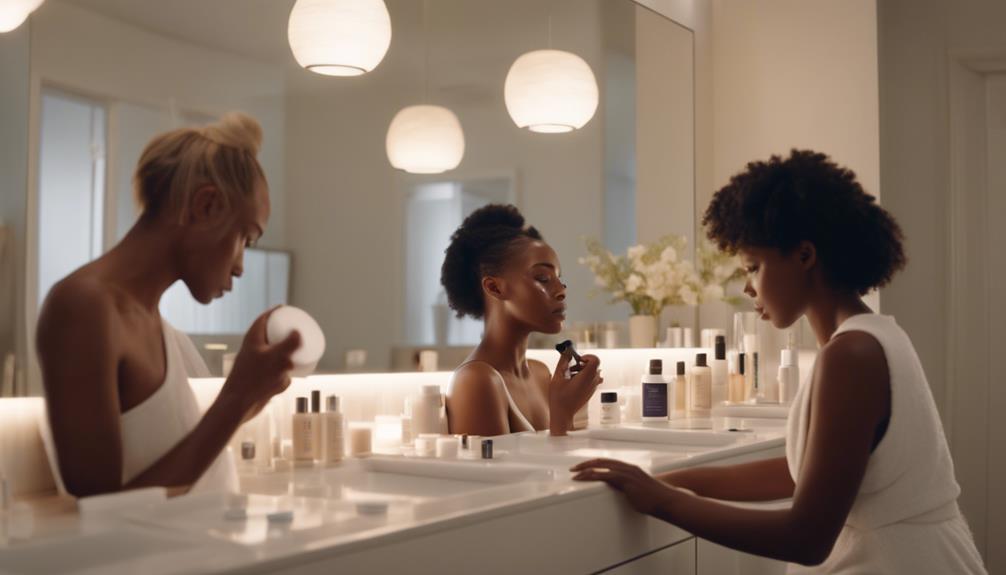
If you're dealing with acne or signs of photo-aging, tretinoin could be a powerful ally in your skincare routine. This FDA-approved treatment is especially beneficial for those approaching menopause, as hormonal changes can intensify skin aging and loss of elasticity. If you struggle with persistent acne or want to combat fine lines and wrinkles, incorporating tretinoin can help improve your skin's appearance.
However, it's vital to approach tretinoin with caution. If you have a history of allergic reactions to tretinoin or other retinoids, you should avoid its use and consult a healthcare provider for alternative options. Additionally, if you have sensitive skin or frequently expose your skin to harsh environmental conditions, like sun or wind, tretinoin may increase irritation.
Before starting any new treatment, consulting a healthcare provider is essential. They can offer personalized guidance, especially if you have specific medical conditions or are pregnant or breastfeeding. By understanding who should use tretinoin and under what conditions, you can maximize its benefits while minimizing potential side effects.
Integrating Tretinoin Into Your Routine
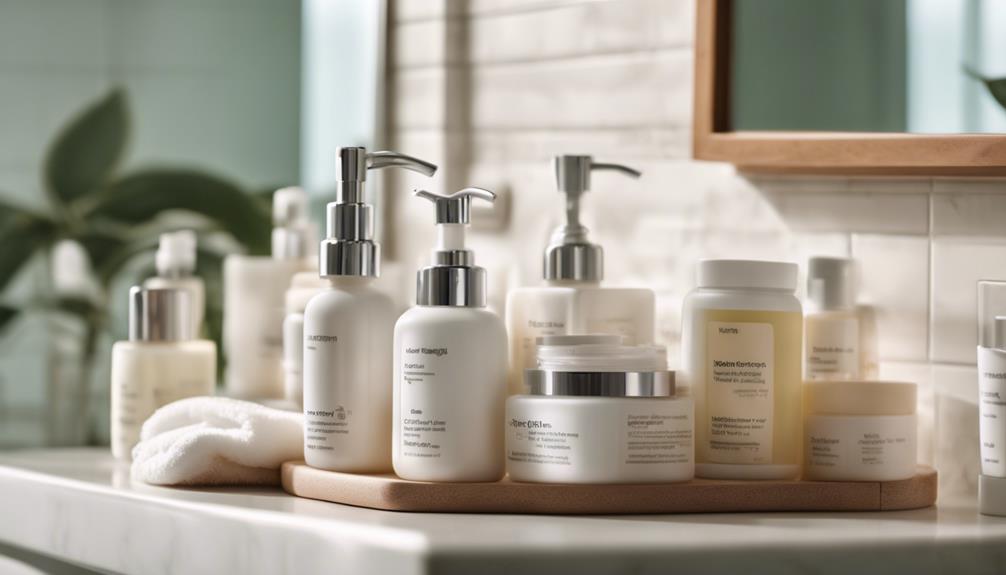
To integrate tretinoin effectively into your routine, start by focusing on the right application timing and frequency.
You'll want to apply it to clean, dry skin in the evening and gradually increase how often you use it.
Also, consider complementary skincare products that can enhance its benefits while minimizing irritation.
Application Timing and Frequency
Applying tretinoin at night is crucial for maximizing its effectiveness while minimizing irritation. Tretinoin can degrade in sunlight, so using it during your nighttime routine guarantees it works its magic while your skin repairs itself.
To start, cleanse your skin and wait 20-30 minutes until it's completely dry before you apply tretinoin. This wait helps reduce irritation, allowing your skin to better tolerate the treatment.
Begin with a frequency of 2-3 times a week. As your skin builds tolerance, gradually increase to nightly use. This patient approach helps you enjoy the benefits of tretinoin without overwhelming your skin.
Consider using the sandwich technique: apply a thin layer of moisturizer before and after applying tretinoin. This adds hydration, further reducing potential irritation.
Keep in mind that seeing results takes time. For acne, initial improvements may take 2-3 weeks, while anti-aging effects can take up to 6 months.
Consistency is key; stick to your routine and give your skin the time it needs to adjust and reveal its best self.
Complementary Skincare Products
Integrating complementary skincare products into your routine can enhance the benefits of tretinoin while minimizing irritation.
Start with a gentle cleanser to cleanse your skin without stripping moisture. This sets a solid foundation for your skincare routine. After cleansing, apply a pea-sized amount of tretinoin to dry skin at night, followed by a hydrating moisturizer. This step is essential to help mitigate dryness and irritation.
Consider incorporating hyaluronic acid in your routine, but use it separately from tretinoin to avoid irritation. The 'sandwich technique' is effective here: apply a layer of moisturizer before and after applying tretinoin. This can greatly reduce dryness and improve your skin's tolerance, especially when you're just starting.
Don't forget about sun protection! Tretinoin increases skin sensitivity, so always apply a broad-spectrum sunscreen with SPF 50 during the day.
Application Guidelines
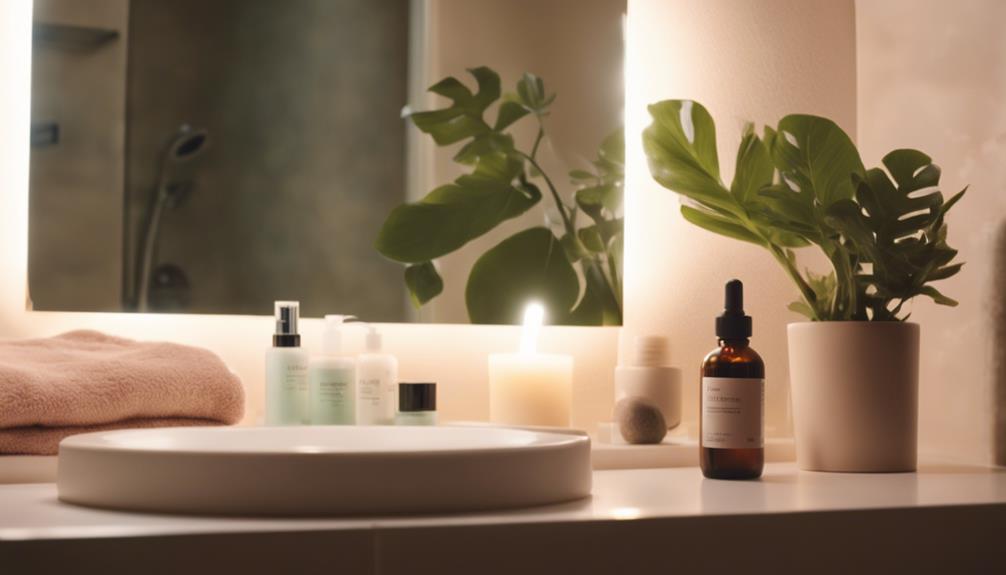
Nighttime is the ideal time to apply tretinoin, as it helps maintain its potency and allows your skin to recover while you sleep.
Begin by cleansing your face and then wait 20-30 minutes for your skin to completely dry. This step is vital in reducing irritation. For application, use a pea-sized amount of tretinoin, spreading it evenly across your face. To further minimize irritation, consider using the 'sandwich method': apply a moisturizer before and after your tretinoin application.
Start with a frequency of 2-3 times per week, gradually increasing to nightly use as your skin tolerance builds. This gradual approach helps your skin adapt without overwhelming it.
Remember, tretinoin can increase your skin sensitivity, so it's important to follow up with sunscreen (SPF 50) during the day. This protects your skin from UV damage and guarantees you can continue enjoying the benefits of tretinoin without adverse effects.
Managing Side Effects
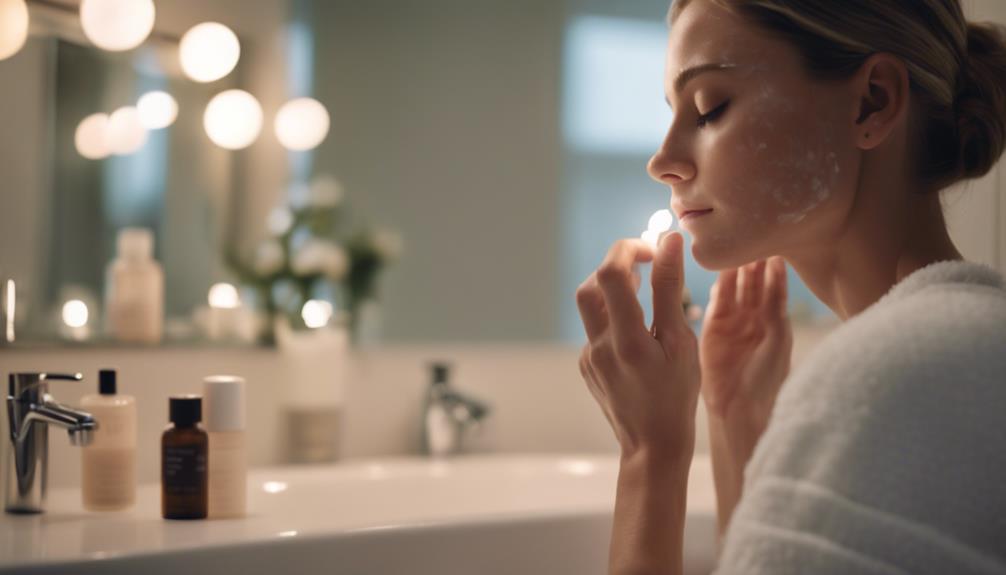
Managing the side effects of tretinoin is essential to maintaining a positive skincare experience while you adjust to this powerful ingredient. Start with a lower concentration of tretinoin to minimize irritation. Gradually increase the frequency of use as your skin acclimatizes. You can also incorporate the 'sandwich technique' by applying a moisturizer before and after tretinoin to combat dryness and sensitivity.
Consistent application of a broad-spectrum sunscreen (SPF 50) is vital, as tretinoin heightens your skin's sensitivity to UV rays. Hydrating ingredients like hyaluronic acid or niacinamide can help reduce dryness and improve your skin's tolerance to tretinoin.
Here's a quick reference table to help you manage side effects effectively:
| Side Effect | Management Tips | Recommended Products |
|---|---|---|
| Dryness | Use a thicker moisturizer | Cream-based moisturizers |
| Irritation | Start with a lower concentration | 0.01% or 0.025% tretinoin |
| Increased Sensitivity | Apply sunscreen daily | SPF 50 broad-spectrum sunscreen |
| Initial Acne Purge | Be patient, it'll pass | Gentle cleansers |
| Hydration | Incorporate hydrating ingredients | Hyaluronic acid, niacinamide |
With these strategies, you'll enjoy the benefits of tretinoin while minimizing discomfort.
Ingredients to Avoid
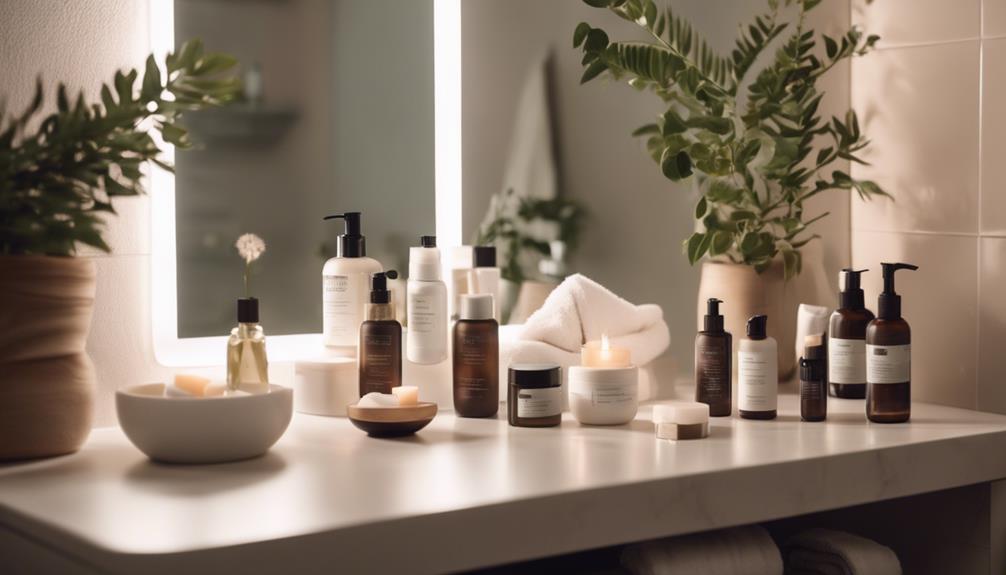
When using tretinoin, it's crucial to steer clear of certain ingredients that can heighten irritation and reduce its effectiveness.
First on the list is benzoyl peroxide. Mixing it with tretinoin can lead to increased redness and irritation, making both products less effective. Similarly, avoid using salicylic acid and glycolic acid together with tretinoin, as they can exacerbate skin sensitivity.
You should also be cautious with vitamin C, especially high-strength ascorbic acid. While it's beneficial in the morning, combining it with tretinoin at night can compromise the stability of both ingredients. Lactic acid and other strong exfoliants are another group to avoid, as they can considerably increase the risk of irritation when used alongside tretinoin.
Additionally, steer clear of physical exfoliants and scrubs while on tretinoin. These can be abrasive and worsen skin irritation, undermining your efforts to achieve clear skin.
Tips for Successful Use
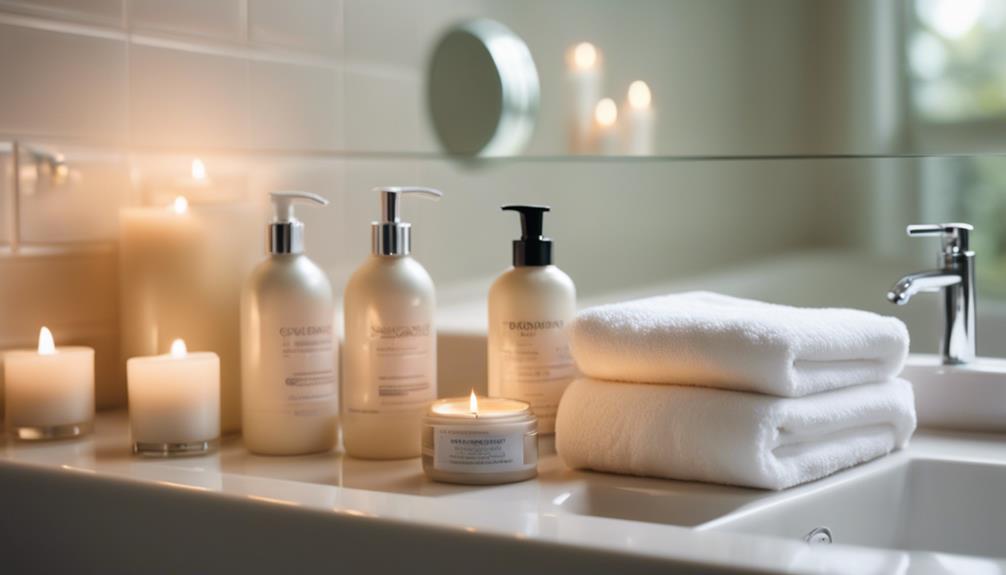
Starting with a low concentration of tretinoin helps your skin adjust and minimizes the risk of irritation.
Begin your skincare routine with a 0.01% or 0.025% tretinoin, applying it 2-3 times a week. As your skin gets used to it, you can gradually increase the frequency to nightly use. When you apply tretinoin, use a pea-sized amount for your entire face and make sure to apply it to dry skin, ideally 20-30 minutes after cleansing with a mild cleanser.
To further minimize irritation, consider using the 'sandwich technique': apply a moisturizer before and after tretinoin. This method helps combat dryness and enhances comfort.
It's vital to avoid using harsh ingredients like benzoyl peroxide or salicylic acid alongside tretinoin, as they can heighten irritation and sensitivity.
Lastly, never forget to apply sunscreen daily. Tretinoin can increase sun sensitivity, so a broad-spectrum sunscreen with SPF 50 is essential to protect your skin from UV damage.
Following these tips will help you enjoy the benefits of tretinoin while keeping your skin healthy and irritation-free.
Is Tretinoin Similar to Retinol in Terms of Skincare Benefits and Irritation?
When comparing tretinoin with retinol in terms of skincare benefits and irritation, it’s important to follow the best practices for retinol skincare routine. Both tretinoin and retinol are forms of vitamin A that can improve skin texture and reduce acne, but tretinoin is stronger and may cause more irritation.
Conclusion
Incorporating tretinoin into your skincare routine can transform your complexion, but it's crucial to do it right.
Did you know that about 80% of users experience clearer skin within just 12 weeks? By following the guidelines and tips provided, you can maximize the benefits while minimizing irritation.
Remember, patience is key, and with consistent use, you'll likely see significant improvements in your skin's texture and tone.
So, embrace the journey to healthier skin!
